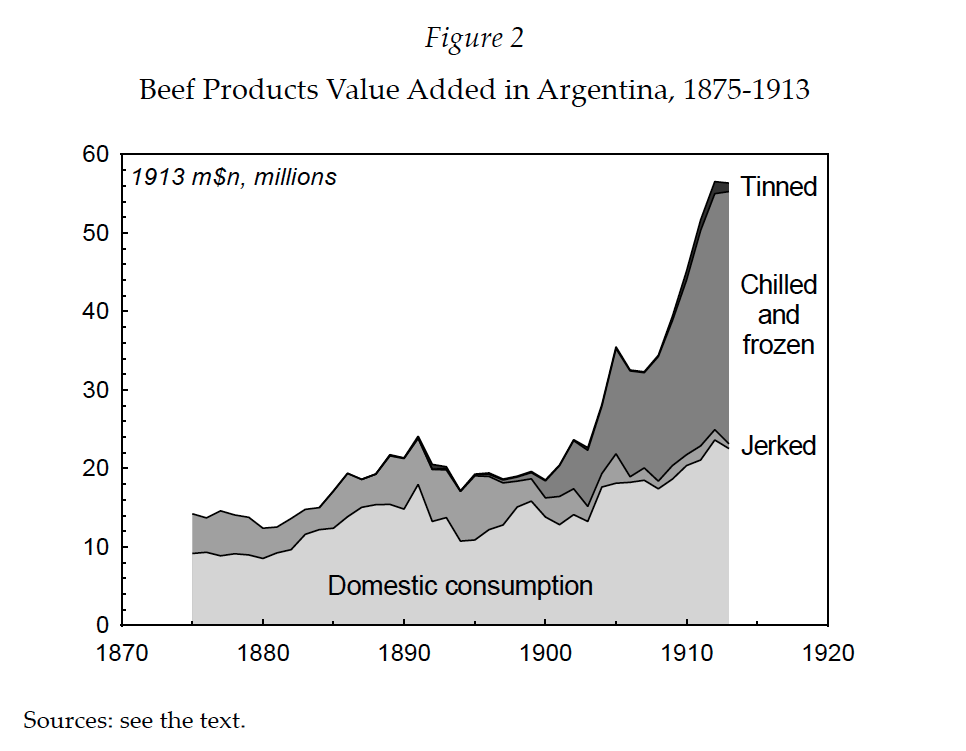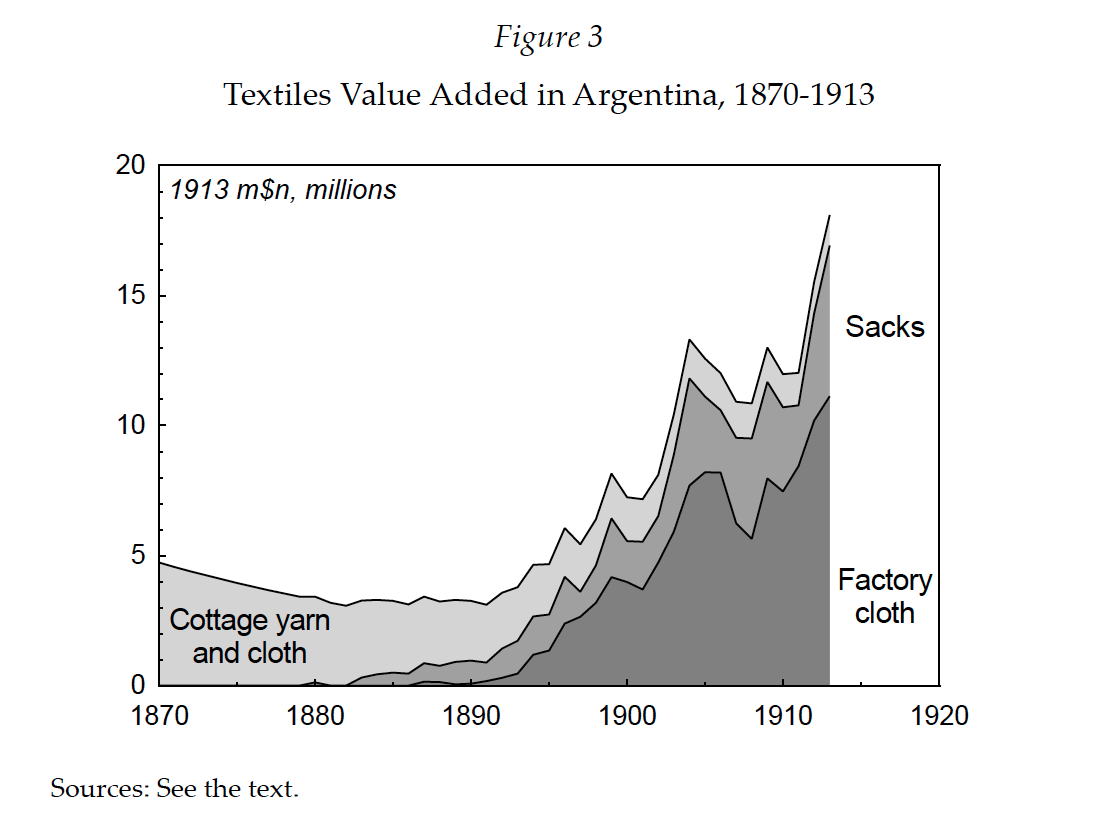A new estimate of Argentina’s industrial output suggests a less optimistic view of the country’s ‘golden age’.
In a previous post I discussed a working paper in which I criticised Roberto Cortés Conde’s estimates of Argentina’s industrial output from 1875 to 1913. In a new version of that working paper I have taken the plunge by producing my own index for this period. It suggests a considerably lower rate of industrial growth than is found in the standard optimistic account of the country’s ‘golden age’.
While far from perfect, the new index is an improvement on Cortés Conde’s estimates, as it is made up of better indicators of output with a wider coverage. In Figure 1 it is compared to Cortés Conde’s estimates. As can be seen, the difference is substantial: the trend growth rate of the new index is 5 per cent per year, whereas Cortés Conde found 8-9 per cent annual growth. While Cortés Conde’s estimates suggest dramatic industrialisation, my estimate shows industry growing at around the same rate as agriculture. It therefore undermines the staple theory-inspired account of Argentina’s export-led growth leading to industrialisation without the need for an interventionist industrial policy on the part of government.

One reason why it is easy to overstate the pace of industrialisation in Argentina during this period is that there was a considerable degree of ‘creative destruction’, as the expansion of new industries undermined older industries. In the working paper I describe this process for both beef products and textiles.
In the case of beef products, shown in Figure 2, meatpacking grew rapidly due to the take off refrigerated meat exports, but salted beef contracted and production for domestic consumption grew more slowly, as competition with the meatpackers for cattle made salting uneconomic and helped push up the price of meat for consumers. The dynamic parts of the beef products sector in this way helped depress the growth of the more traditional parts. If only meatpacking is examined, it seems like there is rapid industrialisation, but if salting plants and abattoirs are included, the picture appears more pessimistic.

Similarly, in the case of textiles, factory-based processing of imported yarn and sacking grew dramatically, but at the same time made cottage textile production collapse, leading to a much lower trend growth rate. My estimates of this process are shown in Figure 3. Again, by excluding cottage producers from the analysis, Argentina’s industrial growth can be made to appear far more rapid than it actually was.
 I also argue in the paper that it is easy to overestimate Argentina’s industrial growth in this period because there is more abundant data for the dynamic activities than for the less dynamic or stagnant activities. Frozen and chilled beef exports, for instance, can easily be used to measure the output of the meatpackers, but it is less easy to estimate domestic beef consumption – in the working paper, I have to use the ratio between wages and beef prices (themselves partly estimated) to do so. Similarly, imports of yarn and sacking can be used as a fairly reliable indicator of factory-based textile output, whereas I had to use census data on occupations as an imperfect proxy of cottage production.
I also argue in the paper that it is easy to overestimate Argentina’s industrial growth in this period because there is more abundant data for the dynamic activities than for the less dynamic or stagnant activities. Frozen and chilled beef exports, for instance, can easily be used to measure the output of the meatpackers, but it is less easy to estimate domestic beef consumption – in the working paper, I have to use the ratio between wages and beef prices (themselves partly estimated) to do so. Similarly, imports of yarn and sacking can be used as a fairly reliable indicator of factory-based textile output, whereas I had to use census data on occupations as an imperfect proxy of cottage production.
Making such methodological choices is an unfortunate part of the sausage factory that quantitatively-minded historians so frequently have to work in. In doing so, it is important not to include ingredients that bias the results to one’s own tastes. Perhaps I have made choices that lead to a too pessimistic (re)vision of Argentina’s ‘golden age’, but I have tried not to.

Pingback: Peer review can be funny | Joe Francis
This is quality work regarding the topic! I guess I’ll have to bookmark this page. See my website 63U for content about Cosmetic Treatment and I hope it gets your seal of approval, too!